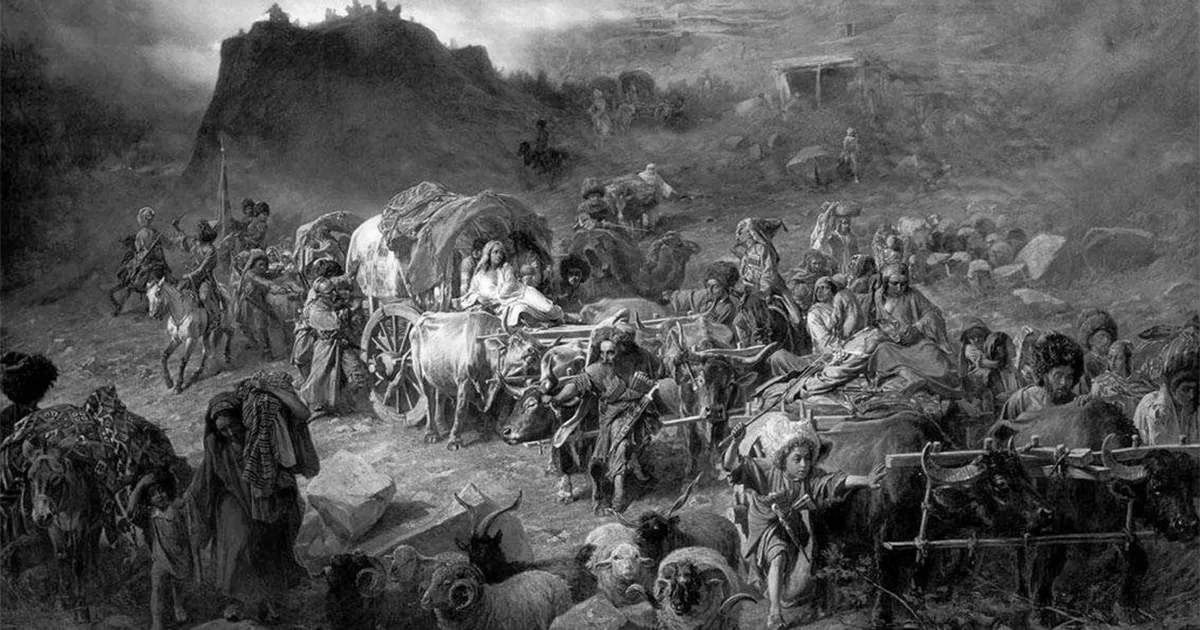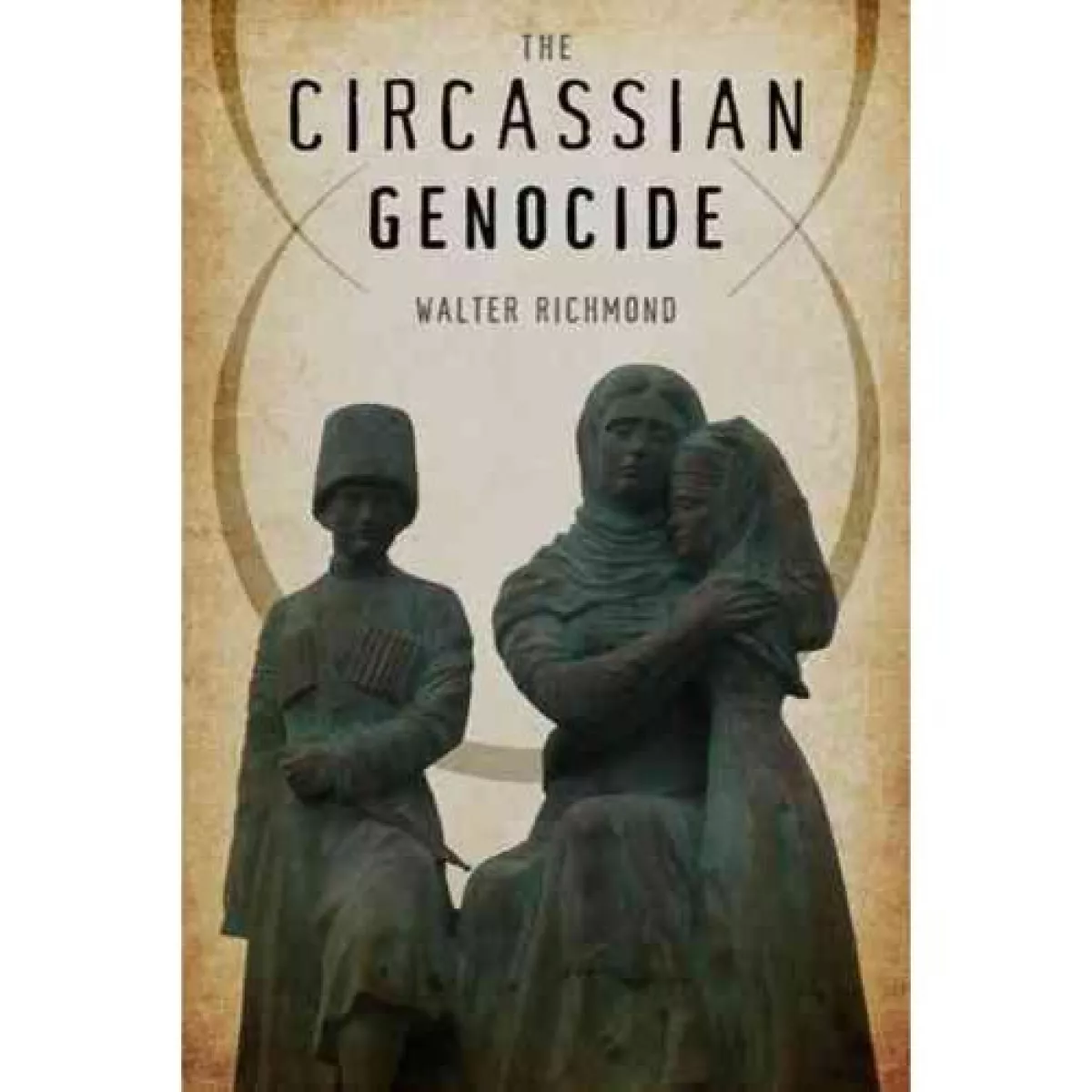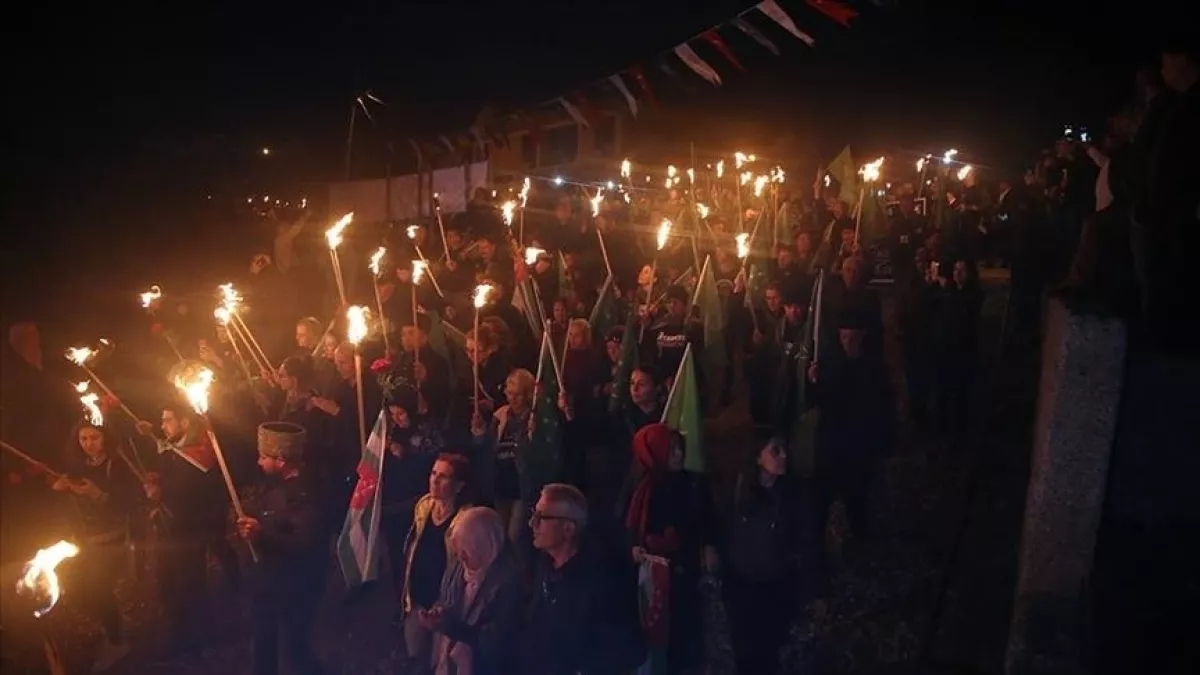The Circassian wound The truth they try to erase
The 19th century, filled to the brim with parades of imperial ambitions, hides within its depths an endless number of broken destinies. One of the most terrible secrets of that century is the tragedy that befell the Circassian people — a pain that has still not been voiced in the halls of international tribunals, remaining buried in the dust of great power archives. And this pain did not begin with a loud gunshot, but with a quiet intention — from the very moment when the Russian Empire decided that the peaks of the Caucasus should belong to it not only formally, but unconditionally, completely and... without its peoples.
Colonial expansion in the North Caucasus was not merely a political course — it became an ideology backed by bayonets, mass forced deportations, and the destruction of entire peoples. The strategic goal — complete subjugation of the region — required the elimination not only of armed resistance, but also the erasure of the very foundations of the national consciousness of the Caucasian peoples. The Circassians, one of the oldest peoples who had lived for millennia in this mountain land, became the main victims sacrificed on the altar of this goal. Their steadfastness, pride, and courage turned the Circassians into an "inconvenient" people, who were decided to be erased not only from the geographical and political maps, but also from memory.
The Circassian resistance was persistent, selfless, and heroic. They fought for their native language, their faith, their ancestral lands, and their personal dignity. In this struggle, everyone participated — warriors, spiritual leaders, and guardians of cultural traditions alike. At the same time, a large-scale movement was gaining momentum in Dagestan and Chechnya under the leadership of Imam Shamil. Although he did not directly lead the Circassian resistance, his personality became a symbol of the pan-Caucasian struggle against imperial expansion. The ideas of freedom and resistance championed by Imam Shamil resonated deeply in the minds and hearts of the Circassians, who fought desperately for the right to live on their native land.
About the killings and expulsions of the Circassians by Russia, Pushkin wrote in his essay “A Journey to Arzrum”, composed between 1829 and 1835: “Circassians hate us. We drove them out of the pastures…their ruined villages, whole tribes wiped out.”

May 21, 1864, went down in history as the day of the Circassian tragedy. On that day, in the valley of Krasnaya Polyana (Kbaada Valley), near Sochi, a military parade was held to mark the end of the Caucasian War — a kind of celebration by the Russian army of the “final pacification of the Caucasus.” But for the Circassians, it marked the beginning of the darkest chapter in their history: to the sounds of triumphant parade marches, the deportation of an entire people began. From that moment on, it was no longer a war — it was the systematic, permanent implementation of a plan to forcibly expel an entire people from their native lands.
The Circassians were expelled from their ancestral homes, their settlements were burned, and their crops destroyed. They were not even allowed to stay under conditions that would restrict all their rights. Their only “choice” was to be packed into open ship holds, exiled to foreign lands — the territory of the Ottoman Empire. And this journey became a road of death. According to American professor Walter Richmond, author of The Northwest Caucasus and a researcher of the Circassian genocide, 625,000 Circassians died at the hands of the Russian army, led by General Yevdokimov, while between 726,000 and 907,500 were expelled from their homeland. Those who survived never saw their native mountains again.

The forced deportation of the Circassians entered history as the "Great Exile." However, unlike the genocide of other peoples—whose tragic memories have resonated worldwide—the tragic fate of the Circassians remains largely forgotten to this day. Currently, only Georgia and Ukraine have officially recognised the deportation and extermination of the Circassian people as genocide; others remain silent. Perhaps this is because the truth about this tragedy is too inconvenient—it undermines the myth of the Russian Empire’s liberating mission in the Caucasus, and with it, the geopolitical narratives of the present.
Nevertheless, the Circassian diaspora—especially numerous in Türkiye, Jordan, and Syria—continues to fight for justice. Today, descendants of the exiled Circassians establish public organisations, hold academic conferences, and create archives of memory. Many of them, as Adnan Hatuka, chairman of the Circassian association in Amman, admitted in an interview, consider their people to be “hostages of history who have yet to see justice.” They demand not only symbolic recognition of the genocide but also the right to return—the right of repatriation to their historic homeland, which remains legally closed to most Circassians due to Russian legislation and the de facto hostility of the authorities.
Just recently, in May, Circassian organisations once again appealed to the international community to recognise the genocide of their people. Their voice is a warning: tragedies consigned to oblivion have a tendency to repeat themselves.

There are peoples who, despite everything, continue to move—through centuries, through deserts, through the world’s silence—back to themselves. In the Circassians’ journey toward the truth lies not only their personal history. It is a mirror reflecting a world that all too often prefers to ignore suffering when it does not fit into a convenient and profitable geopolitical landscape. But memory is stronger than oblivion. And truth, no matter how long it is suppressed, breaks through the silence.
In its upcoming publications, Caliber.Az will continue to cover the tragic fate of the Circassian people.








